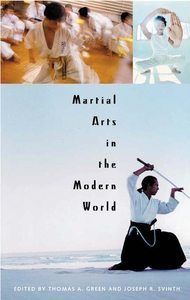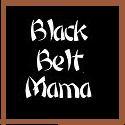November 27, 2007
Martial Arts in the Modern World
Digging through a mountain of tall tales and self-indulgent tripe, Thomas Green, Joseph Svinth, and the rest of the authors of "Martial Arts in the Modern World" gather scarce historical facts in an attempt to shed some light on how the world’s many fighting arts evolved into what we see today.
Martial arts history has suffered from severe tampering because there is a lot to gain by making things up. In his book "Living the Martial Way," Forrest Morgan challenges readers to pick up a phone book anywhere in America and look for martial arts advertisements. In every small town, he explains, you are bound to discover high ranking, world champion grandmasters. In just a few short generations, how could obscure Asian arts create thousands upon thousands of supreme ultimate warriors all over the world?
The truth is, many of these high ranking instructors are caught in the great martial hoax where training is secondary to promotions. These practitioners tend to base their reputation on "world championship" tournaments that feature a handful of combatants from neighboring towns (and often have the patches to remind you). And yet, if you talk to these same "experts," they will describe to you the great exploits of their instructors and the miraculous lineages they come from.
How can this schism of logic be explained – how are there so many unqualified practitioners espousing so many credentials? "Martial Arts in the Modern World" tries to tackle this problem; not by singling out individuals, but by taking the rare approach of factual analysis.
How did Kendo ACTUALLY start in North America? How did Gracie Jujitsu ACTUALLY come about? Have Zen and Kyudo ALWAYS been linked? "Modern World" doesn’t take a blind stab at these topics (and others); it provides the dates, times, and names of key players involved. Very little is left up to hearsay.
Unfortunately, as much as I would like this book to be a cure-all for martial nonsense, it cannot even come close to covering all the different styles around the globe. It makes a valiant effort, attempting to explore history from almost every continent, but there is just too much in the sphere of the unknown. In fact, this global effort results in one of the books negative aspects – lack of cohesion. There are no connections via timeline or topic from one article to the next. There is nothing to pull together a consistent central theme. Couple that with a dry writing style that is occasionally tough to digest and "Modern World" falls short of lofty goals.
"Martial Arts in the Modern World" is a haven for anyone wanting to do real research, but not for those looking to indulge in a great yarn. Overall, Ikigai108 gives this book…
Buy it now through the BBM Review Store.

















